
Lot 78
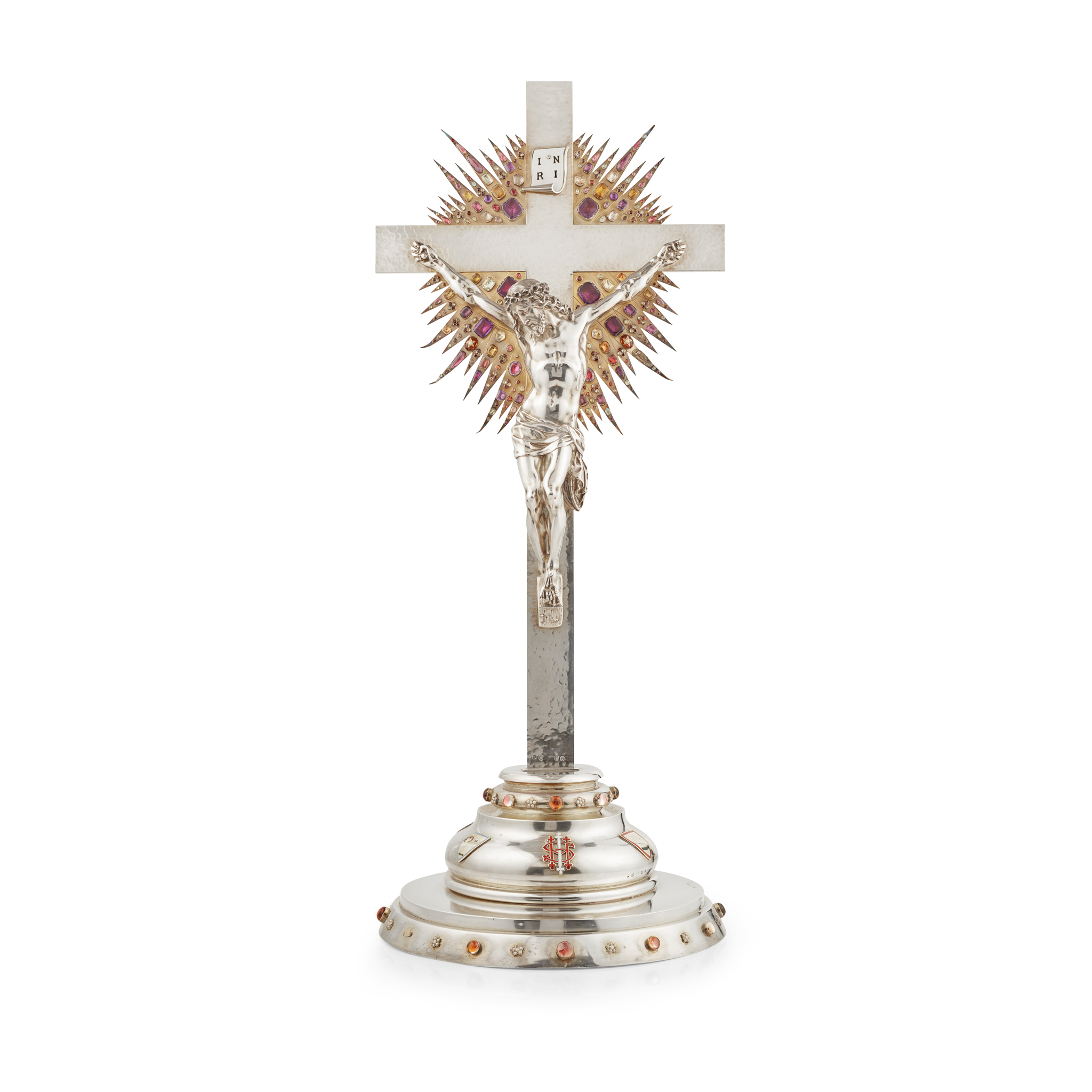
A late Victorian enamel and gem-set altar crucifix
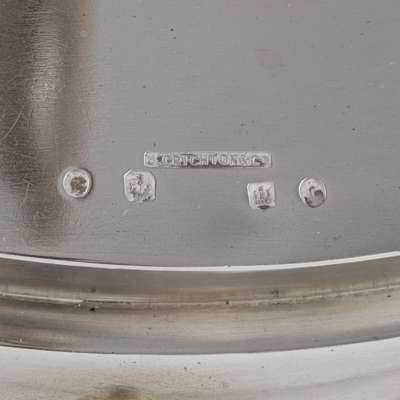
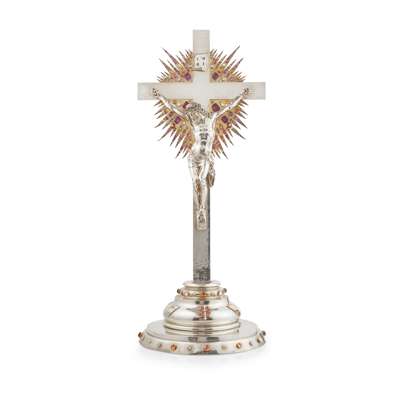
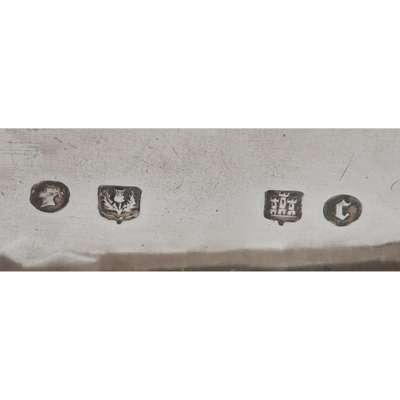


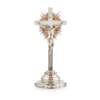
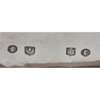

Auction: 05 March 2024 from 10:00 GMT
Description
James Crichton, Edinburgh 1884, the Latin cross of planished finish, set with an applied figure of Christ and a white enamel banner 'INRI', the aureole set with various paste and semi-precious gemstones, including amethyst, cat's eye, etc. in a sunbeam formation, all raised on a domed circular foot with enamel set shields depicting various religious allegorical scenes, the lower rim set with further various gemstones and pastes
Dimensions
Height: 92cm, gross weight: 312.5oz
Footnote
Note: The Biel Crucifix was commissioned by Mrs Mary Georgina Constance Nisbet-Hamiliton-Ogilvie for her private chapel, St. Margaret's, at her home, Biel House in East Lothian.
Mary Georgina Constance Nisbet Hamilton, known as Constance, was born in 1843. She was the only child of Lady Mary Bruce and her husband Robert A. Dundas, and due to recent reforms including the Scottish Married Woman's Property Act of 1881, she inherited and amassed quite a significant personal wealth across East Lothian, with estates spanning Fenton Barns, Archerfield, Winton and Biel House.
Her wealth had stemmed from her grandmother, Mrs. Mary Nisbet Hamilton Ferguson, formerly Countess of Elgin, who along with her first husband, was instrumental in the acquisition of the Elgin marbles.
Establishing her home at Biel House, it wasn’t until Constance was 45 in 1888 that she married her husband, Henry T. Ogilvy, the son of Sir John Ogilvy, Bt., a Liberal M.P. Their wedding was a huge social occasion with the ceremony in their private chapel and celebrations across East Lothian.
It has been noted in the ‘Two Ladies of Direlton’ by Stephen Bunyan “The chapel was richly furnished with the crucifix of beaten silver embellished with precious stones”. The Chapel and this crucifix were both commissioned by Constance and show her devotion to the Episcopalian faith.
We can see that faith was important to further family members, the sculptor Mary Grant, her cousin, has her work to a design by John Oldrid Scott, Reredos panel at the altar in St. Mary’s Episcopal Cathedral at the West End of Edinburgh.
Biel House has always been an important East Lothian house, the Lauder family welcomed James VI in 1599, and the Earls of Belhaven owned the property in the late 17th Century. The architect William Atkinson extended the house in 1814, who also designed, Abbotsford House, the home of Sir Walter Scott. The house had further additions in the early 20th century to create a Tudor Gothic style country house, which welcomed another Royal visit, when Queen Mary visited the house while she was the Duchess of York and her photos have been collated into a scrap book now in the Royal Collection, reference number RCIN 2301337 and RCIN 2301336.
After the death of Mrs Constance Nisbet Hamilton Ogilvy in 1921 services were discontinued at St Margaret’s Chapel at Biel. In an inventor of church fittings from 15th May 1922 refers to this as 'crucifix 3'6" high'. This inventory was put together when the furniture and fittings came under the care of the Vestry of St. Annes, at Dunbar, as the couple were involved between 1888-1890.
After the death of Constance, the estates of Biel and Archerfield passed to Lt.Col.JP Nisbet Hamilton Grant. D.S.O. of Kilgraston.
The calibre of this commission can be seen through the choice of silversmith, based at 47 George Street, James Crichton is first mentioned in the Edinburgh Assay records in 1884. The book of Registrations Vol 1, 1847-1902, notes that two punches registered.
The workmanship required for this piece would have demanded much collaboration between silversmiths, enamellers, and lapidaries in addition to collaboration with the client. We see that along with this impressive commission, J. Crichton & Co. also received commissions from the Scottish nobility.
‘Perhaps one of the most massive and handsome silver vases made for a very long time was that recently turned out by Messrs. J. Crichton and Co., George Street, Edinburgh, and which was presented to the Earl of Mar and Kellie on the occasion of his marriage, by his lordship's mineral tenants in Clackmannanshire, its total weight being 260 ozs.’
The Watchmaker, Jeweller and Silversmith - 1st August 1892
Still very well regarded, and sought after at auction, Lyon & Turnbull had the pleasure of offering an important suite of ten candlesticks and matching pair of candelabra by John Crichton III dated 1879, only last year in 2023 in our Scottish Works of Art auction, 16th August 2023, lot 260. The suite, sold for £25,200 and is engraved with the crest of Brodie of Lethen, Co. Elginshire (or Nairnshire) suggesting that the reputation of the company was felt all over Scotland. Previous other successes have included a large Monteith punch bowl lot 339, dated 1893, sold by Bonhams, which achieved a price of £7,012 in their Scottish Sale, of 14th October 2021.
This crucifix is a wonderful example of a prominent Scottish silversmith and a very well-regarded Scottish family collaborating. It is very unusual to find a piece such as this on such a scale, particularly in a post-reformation religious landscape in Scotland. Similar pieces can be found from the Continent, and survive as early as the 14th century.
One Scottish example, is from the Arts and Crafts movement, sold by Bonhams in their Scottish Sale, 18th August 2011, lot 615, ‘A large and important silver plated on copper and enamel cross circa 1906’ by the iconic Scottish designer, Phoebe Anna Traquair, the cross achieved £50,400 (including premium). Although made in the Arts and Crafts fashion where the craftsmanship was valued higher than the materials, this example being silver-plated, the cross exemplifies the importance of iconography to Scottish chapels.
It is interesting to note in this late Victorian period, there appears to have been a resurgence in commissioning of episcopalian communion silver. This is seen in the Alms plate of St. Paul’s church Aberdeen, made from recycled silver cups and plates from the mid-18th-century and the communion cup, patten and flagon, for St. Paul’s Episcopal Church, Edinburgh both made around 1881. This looking to the Gothic and Medieval past was at that time promoted within the Church of England, and to a lesser extent the Episcopal Church of Scotland, by the High Church Oxford Movement.







